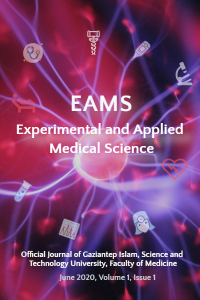
Experimental and Applied Medical Science
Yazarlar: Leyla ÇİMEN, Behzat ÇİMEN, Aysun ÇETİN
Konular:Tıp
Anahtar Kelimeler:Nitrotyrosine,Na+,+-ATPase,INOS,Kidney,Rat,LPS,CAPE
Özet: Sepsis is a response to infection characterized by the formation of highly reactive oxygen and nitrogen substances. The rat kidney was chosen for this purpose because many important inflammatory mediators, including inducible nitric oxide synthase (iNOS) and nitrotyrosine (nTyr) production, are expressed by kidney cells following either lipopolysaccharide (LPS) or bacterial challenge. The present study was aimed at investigating the relationship between nTyr formation with iNOS and Na+,K+-ATPase activities. We were also aimed at investigating the possible role of caffeic acid phenethyl ester (CAPE) on endogenous nTyr production, Na+,K+-ATPase and iNOS activities in the kidney. In this study, kidney Na+,K+-ATPase activity were maximally inhibited 6h after LPS injection and LPS treatment significantly increased iNOS activity of kidney. The regression analysis negative correlation between Na+,K+-ATPase activity and nTyr levels of LPS treated animals. Na+,K+-ATPase activity were also negatively correlated with iNOS activity in LPS-treated rats. These data suggest that nitric oxide (NO.) and peroxynitrite (ONOO-) contribute to the development of oxidant injury. Furthermore, the source of NO. may be iNOS. iNOS are expressed by the kindey, and their activity may increase following LPS administration. In addition, NO. and ONOO- formation inhibited Na+,K+-ATPase activity. This results also have strongly suggested that bacterial LPS disturbs activity of membran Na+,K+-ATPase that may be an important component leading to the pathological consequences such as renal dysfunction in which the production of reactive nitrogen substance (RNS) are increased as in the case of LPS challenge. CAPE treatment was decreased nTyr production and iNOS activites, was increased Na+,K+-ATPase activity. These data suggest that CAPE treatment contribute to the decrease of oxidant injury.